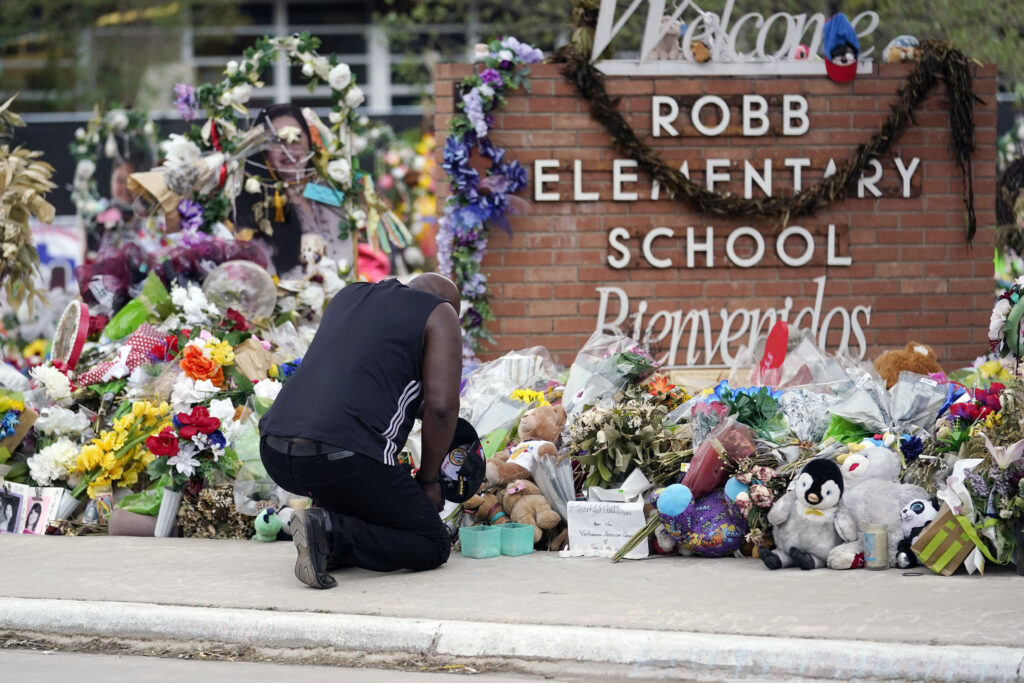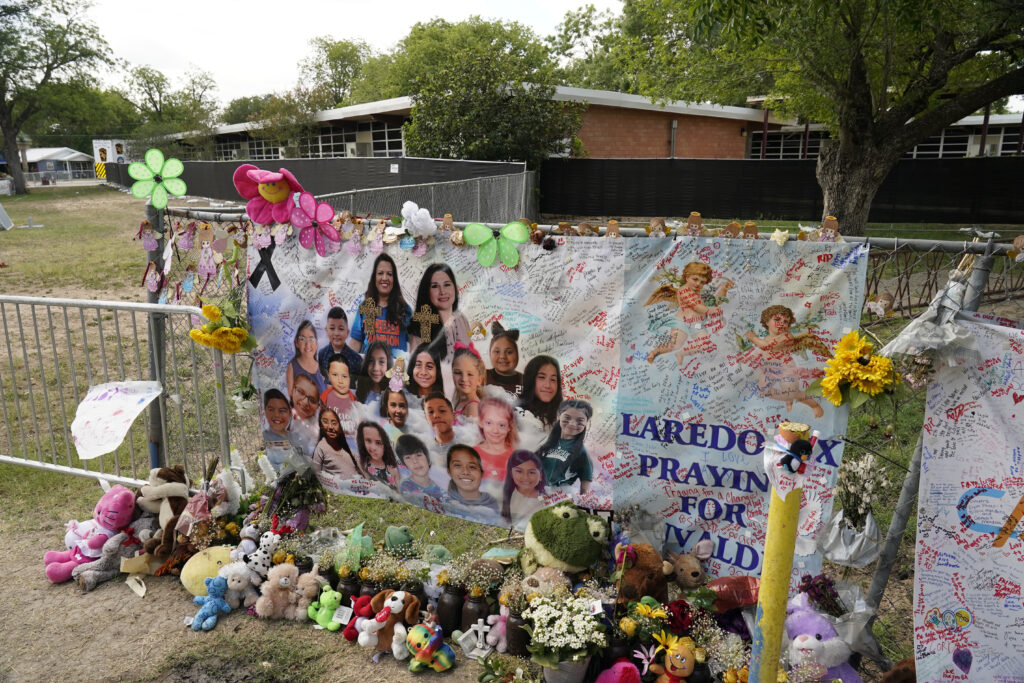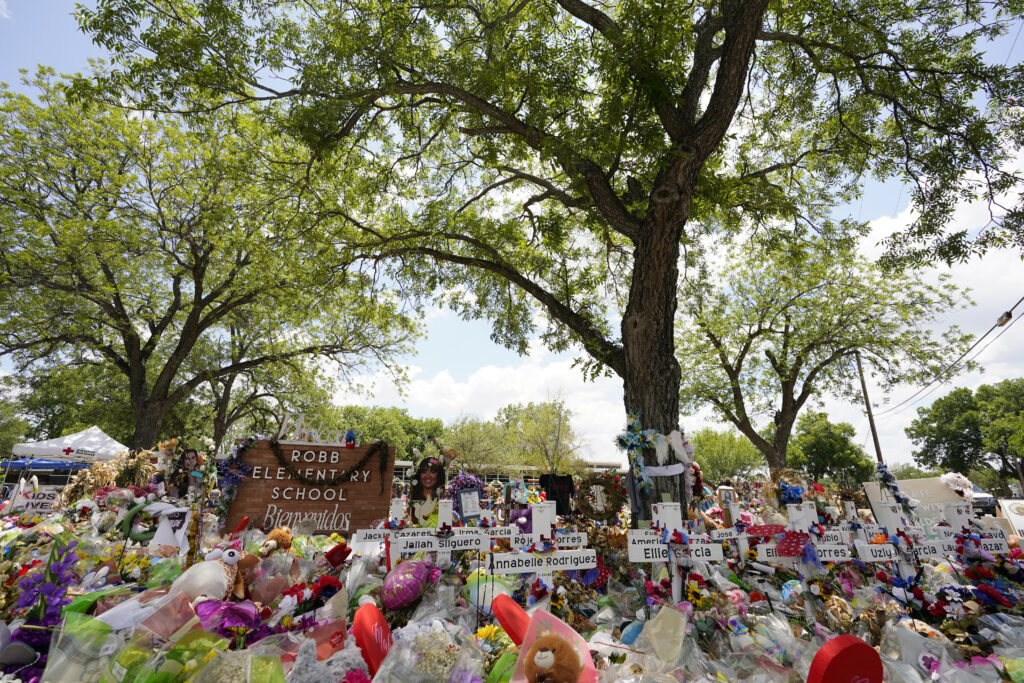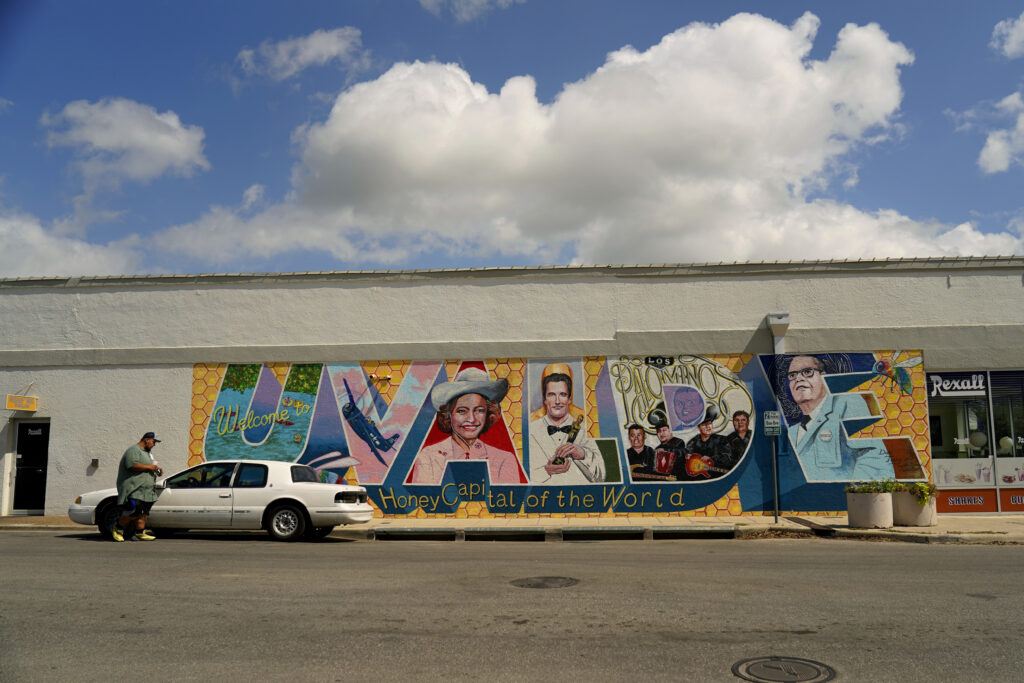Robb Elementary School, where a mass shooter killed over 20 students and teachers, has some interesting history in the town of Uvalde, Texas. In 1970, a lawsuit was filed over discrimination against Hispanic students, resulting in a court order to desegregate. The Associated Press has the story:
Robb Elementary School struggles to return to normalcy after mass shooting
UVALDE, Texas (AP) — As the small Texas city of Uvalde struggles to heal after a gunman killed 19 children and two teachers at an elementary school, thoughts have also turned to ensuring its legacy as the centerpiece of the fight for equal education for Mexican Americans over half a century ago lives on.
In 1970, there was a six-week student walkout in the district, after the school board decided not to renew the contract of George Garza, a popular Mexican American teacher at Robb Elementary School. Student demands included a bilingual curriculum and the hiring of more Mexican American teachers, but the school board refused to budge. A resulting class-action lawsuit alleging discrimination against Hispanic students resulted in the district being placed under a desegregation order in a case that took decades to resolve.
Now, some Hispanic leaders in Uvalde worry that upward mobility through education here could be another victim of the May 24 shooting if students fear returning to school.

“I keep thinking about education,” said Ronnie Garza, who is George Garza’s son and a county commissioner who represents the area of Uvalde that includes Robb Elementary. “I feel for the children. How are they going to feel on the first day of school? I keep thinking of the teachers. Are they going to want to come back to school?”
More than an hour passed from when the first police officers followed the 18-year-old gunman into the building and when he was killed, according to an official timeline. In the meantime, parents outside begged police to rush in and panicked children called 911 from inside.
The head of the Texas Department of Public Safety, Steven McCraw, has said that the school district police chief, Pete Arredondo, who was in charge of the multiagency response, made the “wrong decision” to not order officers to breach the classroom more quickly to confront and kill the gunman.
Arredondo has not responded to repeated interview requests and questions from The Associated Press, but has defended the response.
During a sometimes contentious news conference on Thursday, Uvalde school district officials said they wouldn’t answer any questions about the investigation or personnel matters, even as parents have expressed concerns about safety. When Superintendent Hal Harrell was asked if he still trusts Arredondo, he said, “that’s personnel.”

Harrell said the district would be hiring more police officers in the fall, and that there are ongoing discussions about what will become of the site where the school is located.
“We will not be going back to that campus in any form or fashion,” Harrell said.
Uvalde County Justice of the Peace Lalo Diaz, who helped identify the bodies of those who were killed at the school that he himself attended, said tearing it down will be the right thing to do.
“It’s going to be hard for anybody to go in there,” Diaz said.
In the aftermath of mass shootings at schools across the country, communities have struggled with what to do with the buildings. In Newtown, Connecticut, voters authorized the demolition of the Sandy Hook Elementary School building where 26 students and teachers were killed in 2012 and construction of a new school. In Colorado, Columbine High School, where 13 were killed in a 1999 attack, still stands.
At the now-closed Robb Elementary campus, some of the pecan trees planted by George Garza still provide shade. Garza had also raised money for a basketball court and a running track at the school.

Alfredo Rodriguez Santos was a 17-year-old high school student in Uvalde in 1970 when he decided to participate in the walk out. Santos said that the inequality in the city was something that had already been seeping into his consciousness.
“We sensed things were off, but we weren’t able to articulate them,” said Santos, who had wondered why roads were better in one part of town than the other and why Mexican American students weren’t encouraged to go to college.
“We knew that something was wrong because a lot of kids were dropping out of school. Not a whole lot of kids were going to college,” said Santos, who now lives in Austin and is publisher of bilingual newspapers.
Monica Muñoz Martinez, an associate professor of history at the University of Texas at Austin who grew up in Uvalde and attended Robb Elementary in the 1990s, said both of her parents participated in the walk out when they were in high school.
Martinez’s mom had to translate so her own Spanish-speaking mother could understand school meetings and assemblies that were only held in English.
“That’s one of her memories from Robb is sitting outside the door trying to listen through the crack to give an overview to her mother when she walked out of the meeting,” Martinez said.
Uvalde “stands apart” from other walk outs happening around that time, Martinez said, because the school board decided not to meet any of the demands from the parents and students.
“Leaders in Uvalde at that moment … were sending the strong signal that the racial order that existed there, they were committed to maintaining,” she said.
In 1970, Genoveva Morales filed a class-action lawsuit against the school district alleging discrimination against Hispanic students. Eventually, a court found segregation still existed and the district was ordered to desegregate. A consent order was signed in 2008 and the lawsuit was finally resolved in 2017.
Martinez’s mother went on to work in the school district for 35 years, including as an administrator, and was a member of the school board when the junior high was named for Morales.
The parents of some of those killed at Robb Elementary and injured students have been speaking out, including giving testimony this week to Congress as lawmakers work to strike a bipartisan agreement on gun safety measures.
“I hope that the voices of people from Uvalde who are calling for change, that that can be a catalyst to actually helping to save more lives, not just in Texas but across the country,” Martinez said.
By JAMIE STENGLE and JAKE BLEIBERG







